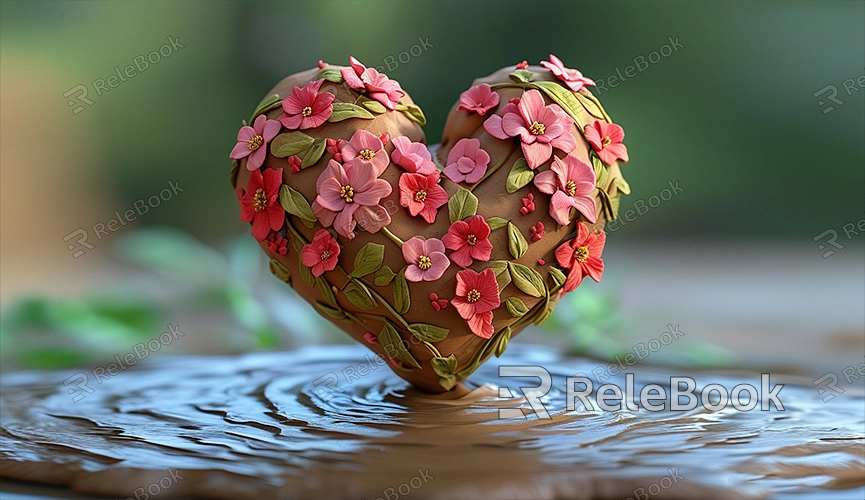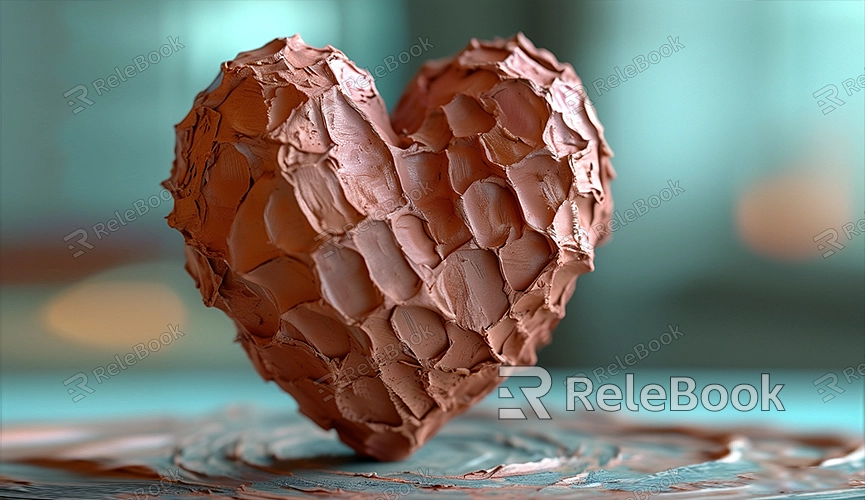How to Make a 3D Heart Model Out of Clay
Creating a 3D heart model is not only fun but also a great way to improve your sculpting skills. Whether you are a craft enthusiast or looking to add a personalized touch to your project, using clay to make a heart model is an excellent choice. This article will detail the steps and provide some practical tips for making a 3D heart model out of clay.
Preparations
Before you start, you need to gather some basic materials and tools:
1. Clay: Choose a clay suitable for handcrafting, such as air-dry clay or pottery clay. These clays harden after drying, making them ideal for model making.
2. Tools: You will need basic tools such as sculpting knives, shaping tools, a rolling pin, and brushes. These will help you shape the clay and add detailed carvings.
3. Reference Image: Find or draw a reference image of a heart model to help you maintain accuracy during the creation process.

Steps to Create the Model
1. Prepare the Clay
First, take an appropriate amount of clay from the package and knead it with your hands until it becomes soft. This will make the clay easier to shape. Ensure your work area is clean and cover it with a protective cloth to prevent the clay from sticking to the surface.
2. Create the Basic Shape
Use your hands or a rolling pin to flatten the clay into a smooth circle or oval. This will serve as the base for your heart model. Then, use a knife or other tools to cut out a heart-shaped outline. Make sure the outline is as smooth as possible to ease the subsequent sculpting work.
3. Form the 3D Effect
Add thickness to the basic shape to create a 3D effect. You can add a layer of clay to the back of the heart model and blend it with the original shape. Use your fingers or tools to evenly distribute the thickness, ensuring each part of the model has a certain three-dimensional feel.
4. Detail Sculpting
Use sculpting tools or small knives to carve details into the heart model. These details can be textures, folds, or other decorative elements. Detailed sculpting is key to enhancing the realism of the model, so try to stay meticulous and precise.
5. Smooth the Surface
Gently brush the surface of the model with a damp brush to remove small particles and uneven spots. This step helps make the surface smoother, preparing it for painting or decoration later on.
6. Drying and Curing
Place the finished heart model in a well-ventilated area to let it dry naturally. The drying time will vary depending on the type and thickness of the clay. Typically, air-dry clay needs 24 hours or more to dry completely. Ensure the model is not disturbed or damaged during the drying process.
7. Painting and Decorating
Once the clay is completely dry, you can paint the model using acrylic paint or other suitable materials. Use a brush or airbrush to apply the paint evenly, then add decorative elements as desired. After painting, you can use a clear protective coat to add shine and durability to the model.

Tips and Tricks
- Be Patient: Creating a detailed heart model requires time and patience. Don’t rush each step; ensure every detail is as perfect as possible.
- Keep Tools Clean: Make sure your sculpting tools are clean when using them to avoid contamination and damage to the clay model.
- Practice and Experiment: If it’s your first time making a 3D heart model, you may need several attempts. Don’t get discouraged; through continuous practice, you will improve your skills.
Creating a 3D heart model is a fun and creative craft project. By choosing the right clay, tools, and reference images, and following the steps outlined above, you can create a beautiful heart model. Additionally, you can enjoy the process of creation and feel a sense of accomplishment upon completion.
If you need high-quality 3D textures and HDRIs, or 3D model downloads for creating models and virtual scenes, you can download them from Relebook. After downloading, you can directly import the textures and 3D models into your projects for use.

